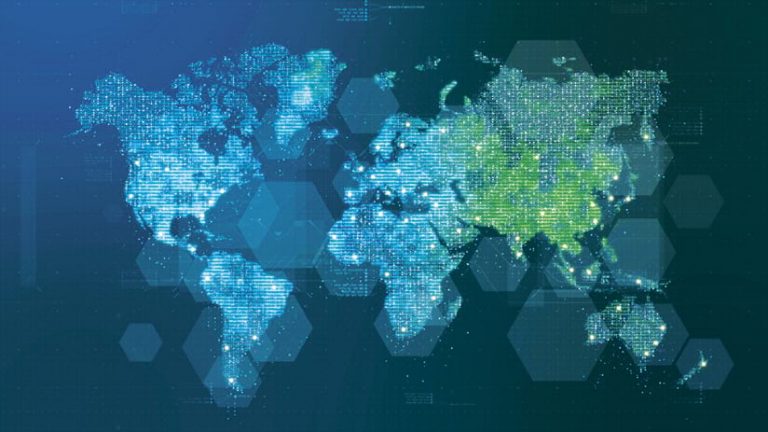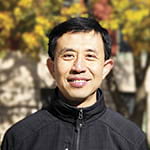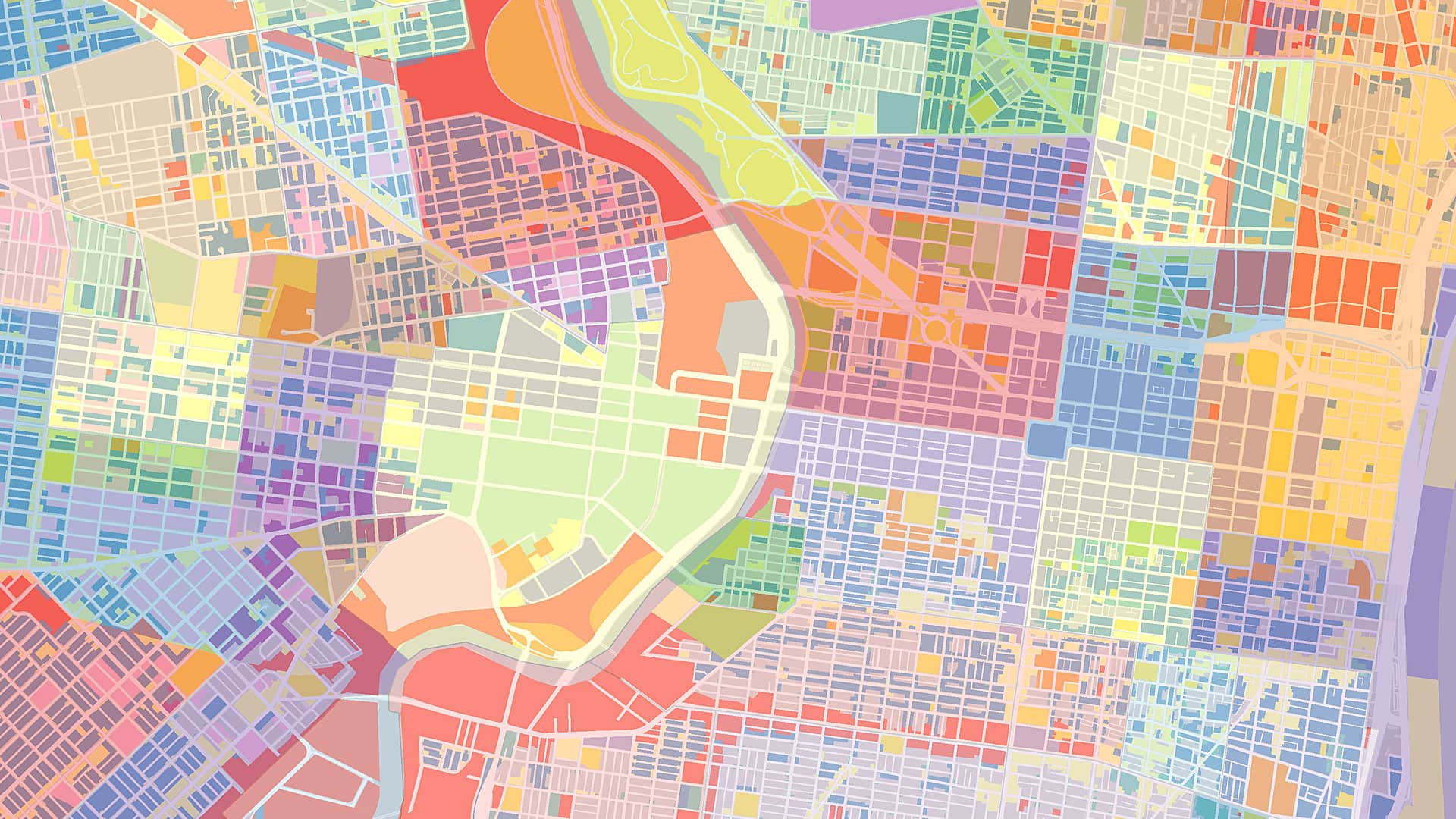In 1854, British physician John Snow took up his grand experiment, the now-famous study of spatial patterns related to the cholera outbreak in London that year. In a notable early example of cross-disciplinary spatial investigation, Snow combined public data about residential neighborhoods and infrastructure with personal interviews to show that the disease was caused by a polluted water supply. This was a monumental event in the history of epidemiology and health geography that demonstrated the power of geospatial analysis to help end disease outbreaks.
Fast-forward to today. The world is deeply trapped in another public health crisis: the COVID-19 pandemic that has killed several million people and infected hundreds of millions more around the world. The fields of geography and public health have progressed significantly since Snow’s work, with GIS and GIScience playing essential roles in enhancing our understanding of the spread and impacts of infectious diseases. But despite this progress—and, in part, because of it—obstacles remain when trying to harness the complex and massive geospatial data that has been collected rapidly during the fight against COVID-19.
These challenges are both technical and social. The complexity of geospatial data can make it difficult to choose and integrate datasets and tools for rigorous analysis and modeling. It can also be challenging to build collaboration across disciplines and with stakeholders who are interested in solving problems associated with COVID-19. Furthermore, any advances made via collaborations need to be readily accessible to other researchers so that the results can be reproduced and used by people—such as GIS app users and decision-makers—who might not have easy access to advanced cyberinfrastructure and high-performance computing resources.

In Snow’s day, data integrity, sound study design, and reproducibility were already a challenge. These can still be really difficult—sometimes more so—to achieve in today’s data-intensive and multidisciplinary science ecosystem. We need to bridge the digital divide in GIS and ensure that everyone benefits from science by democratizing access to advanced cyberinfrastructure and high-performance computing resources. That’s the goal of CyberGIS 2.0.
Geospatial Fellows Expand the Use of CyberGIS to Enhance Reproducibility
To tackle these challenges, I am leading several efforts at the University of Illinois at Urbana-Champaign’s (UIUC) CyberGIS Center for Advanced Digital and Spatial Studies. One such effort, funded by the National Science Foundation (NSF), is being done in partnership with the American Association of Geographers (AAG); the National Opinion Research Center (NORC) at the University of Chicago; the Open Geospatial Consortium (OGC), Inc.; and the University Consortium for Geographic Information Science (UCGIS). From 2020 to 2021, this project supported 16 geospatial fellows who work in diverse geospatial communities—from public health and the spatial sciences to geography and urban and regional planning—in exploring solutions to technical and social issues that might impede the use of cyberinfrastructure-based GIS and GIScience to respond to a public health crisis like COVID-19. Fellows were provided with resources that enabled them to combine geospatial software and data at scale to conduct cutting-edge COVID-19 analyses on things like human mobility patterns and the effects evictions had on the virus’s spread. The idea was to have the fellows use cyberGIS to analyze big data, support critical spatial thinking, and develop educational materials—all in ways that made the results reproducible and accessible. By the end of the fellowship, participants produced a rich set of geospatial resources, such as software modules, open data, reproducible computational notebooks, and research publications.
With support from the AAG, the CyberGIS Center hosted a free webinar series in 2021 that brought together people from the geospatial community to learn more about the fellows’ projects. The series centered on how employing cyberGIS can enable better research on and education about COVID-19, and presenters paid particular attention to the challenges of reproducibility. Video recordings of all the webinar presentations and subsequent discussions are available.
For example, Dr. Jayajit Chakraborty, professor of geography at the University of Texas at El Paso, presented his research on the relationship between people’s disability status and COVID-19 vulnerability to highlight some of the spatial and social inequities that underlie the spread of the disease in the United States. Chakraborty’s work was subsequently reported on by multiple news outlets, including USA TODAY.
Given the rapidly evolving landscape of COVID-19 research and the increasing need for open and accessible educational resources about the disease, we at the CyberGIS Center expect the topics addressed by the geospatial fellows to serve as the initial focus of our continued community engagement. As future obstacles and opportunities arise, we also hope to expand the scope of intellectual exchange into new areas, such as how to make the results of geospatial artificial intelligence (AI) studies more interpretable and reproducible.
New Program Integrates Diverse Disciplines to Solve Pressing Problems
I am excited to further the CyberGIS 2.0 vision through a new endeavor as well: the recently funded NSF Institute for Geospatial Understanding through an Integrative Discovery Environment (I-GUIDE). The goal of I-GUIDE () is to revolutionize how data-intensive geospatial analyses are performed. I-GUIDE seeks to synergistically advance cyberGIS and cyberinfrastructure capabilities to address the most pressing resilience and sustainability challenges the world is currently facing, from biodiversity loss to food and water insecurity.
With a nearly unprecedented investment of $15 million from the NSF, plus the support of many partners, including the AAG, I-GUIDE will bring together about 40 researchers initially to integrate AI and cyberGIS, develop reproducible data-intensive analytics and modeling, explore the principles of FAIR (findable, accessible, interoperable, and reusable) data, and create innovative education and workforce development programs. This transformative research and educational approach has the capacity to catalyze new relationships among geospatial industries and government entities in support of better convergence science—the integration of diverse disciplines to gain greater problem-solving capabilities. Such partnerships are necessary to drive advances across many fields, ranging from computer, data, and information sciences to atmospheric sciences, ecology, economics, environmental science and engineering, human-environment and geographic sciences, hydrology and water sciences, industrial engineering, sociology, and statistics.
None of these efforts would be possible without strong, dedicated partners and colleagues. Among those are the organizing committee members of the Geospatial Fellows Webinar Series, including AAG executive director Gary Langham; AAG senior geography researcher Coline Dony; University of California, Santa Barbara, professor emeritus Michael Goodchild; UIUC professor Anand Padmanabhan; and UIUC PhD student Rebecca Vandewalle.
We welcome any comments about and expressions of interest in the webinars and other related activities. Feel free to email me at shaowen@illinois.edu, get in touch with members of the organizing committee for the webinar series, or contact any of the geospatial fellows.


